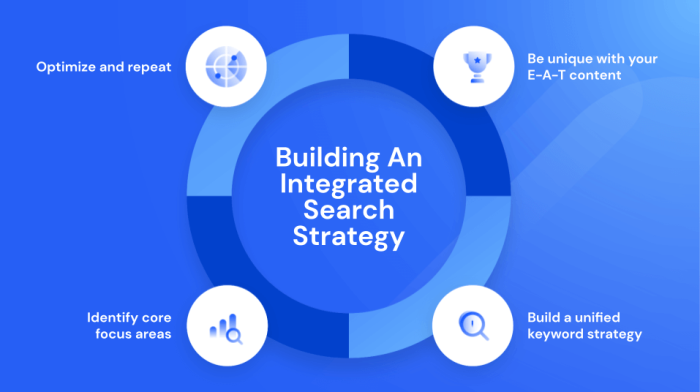An integrated search strategy, which combines SEO tactics with all the other forms of digital marketing, such as content marketing and social media, can help ensure that your message reaches the right people at the right time. This article will explore the critical elements of building an integrated search strategy, including defining your target audience and setting realistic goals.
This article will guide you through creating an integrated search strategy.
See Also: Which Is The Best Strategy For E-commerce: Off-Page or On-Page SEO?
Contents
Having An Integrated Search Strategy Is Paramount
Search engines are becoming consumers’ preferred method of finding goods, services, and information in the digital age. For businesses, having a solid search engine presence is critical to their success. But doing so takes more than making individual sites more search engine friendly. An effective search strategy involves a comprehensive approach that integrates elements to create a cohesive and impactful online presence.
Keyword Research
Keyword research is the foundation stone for any successful search strategy. It involves identifying words and phrases that potential customers use to search for products and services in your industry. You can optimize your website and content to match their search queries by understanding what your target audience is searching for.
When conducting keyword research, focusing on short-tail and long-tail keywords is essential. Short-tail keywords are broad search terms that typically have high search volumes. Long-tail keywords, on the other hand, are specific and targeted but have lower search volumes. Optimizing for both keywords can attract a wider audience while capturing highly qualified leads.
On-Page Optimization
Once you identify your target keywords, the next step becomes to optimize your website and content to rank for those keywords. On-page optimization involves changing your website’s structure, content, and HTML code to make it more search engine-friendly. This includes:
- Creating high-quality, keyword-rich content
- Using descriptive title tags and meta descriptions
- Optimizing your website’s URL structure
- Using header tags to organize your content
- Including internal and external links
Off-Page Optimization
Off-page optimization involves building external links to your website to increase its authority and relevance in the eyes of search engines. This includes tactics such as guest blogging, influencer outreach, and social media marketing. Building high-quality links from authoritative websites can improve search engine rankings of your website and attract more traffic.
Local SEO
It is crucial for driving foot traffic and generating leads if your business has a physical location. Local SEO involves website optimization and content for local search queries. This includes:
- Creating a Google My Business profile
- Optimizing your website for local keywords
- Building local citations and backlinks
- Encouraging customer reviews and feedback
Content Promotion
Creating and publicizing insightful data that appeals to and engages your target audience is known as content marketing. Visualizations, videos, write-ups, and other content are great examples.
You can enhance your search engine rankings and bring more visitors to your website by producing high-quality content optimized for search engines.
Paid Search Advertising
Paid search advertising places ads on search engine results pages (SERPs) for targeted keywords. This can be an extremely successful method to drive traffic to your website and generate leads.
 Targeting specific keywords and demographics ensures that the right people see your ads at the right time.
Targeting specific keywords and demographics ensures that the right people see your ads at the right time.
Measurement And Analysis
Finally, it’s essential to measure and analyze the results of your search strategy to identify what’s working and what’s not. This involves tracking your website’s traffic, rankings, and conversion rates and analyzing customer feedback and engagement metrics. Using data to inform your strategy, you can continuously improve and optimize your search efforts.
Conclusion
Thus this was all about building an integrated search strategy. Hope this article would have been helpful to you.
See Also: Keyword Mapping: A Beginner’s Guide




